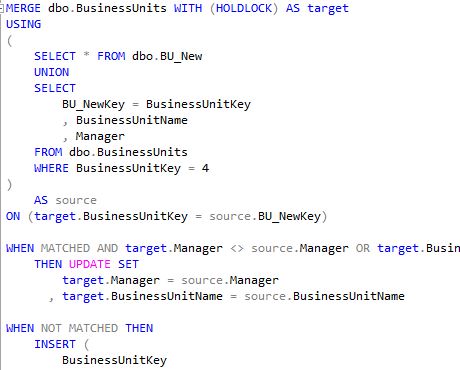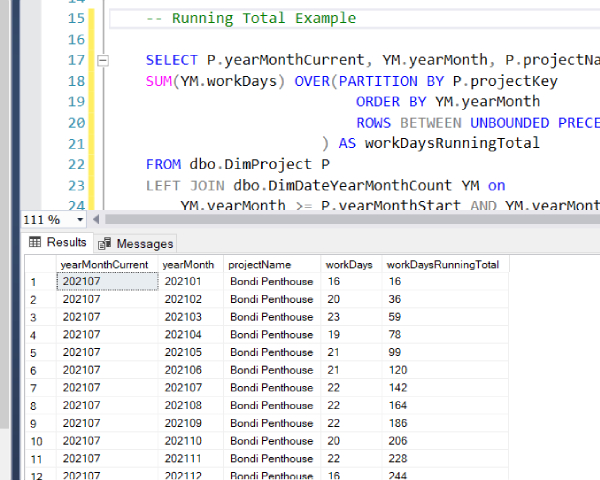T-SQL (Transact-Structured-Query-Language) is central to using SQL Server. Although not general-purpose, T-SQL is a powerful programming language and is ‘Turing’ complete, that is, it could in theory be used to solve any computational problem. … but enough lecturing.
T-SQL is an extension of the SQL query language. It is used to communicate with databases and T-SQL has numerous additional commands and functionality that make it very powerful. Unlike SQL, T-SQL executes statements in a "procedural" way. That is, the T-SQL code is processed as a block, logically and in a structured order.
Being able to use T-SQL effectively and leverage the power of databases will make the search for data insight easier.
Unlock the power of the T-SQL Merge Statement
As you combine data from different data sources and continually load new data the need to ensure your data is accurate and updated efficiently becomes paramount.
The T-SQL Merge statement is a powerful tool. In simple terms, it combines inserting, deleting and updating a target table based on data in a source table.
In this post, we walk through an intentionally simple example to help visualise and understand how MERGE works.
T-SQL Windows Functions - 3 Practical Worked Examples
Windows functions provide very powerful and performant functionality. Understanding when and how to use them can save significant time and result in great solutions.
This post provides 3 practical, worked examples of simplified real-world use cases for Windows functions.
Next Steps...
To see tips on Data Strategy, Analytics and other useful data tools such as Power BI and Excel VBA please visit the Data Insight blog.

